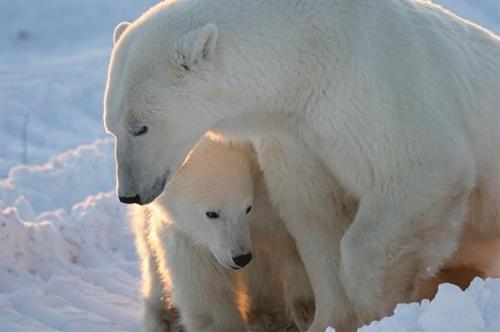Extraterrestrial impact may have caused abrupt climate change 12,800 years ago, research suggests
07/31/2020 / By Virgilio Marin

Sediment cores taken from White Pond in South Carolina show that an extraterrestrial collision may have triggered an abrupt change in the Earth’s climate 12,800 years ago, said archaeologist Christopher Moore of the University of South Carolina.
About 14,500 years ago, Earth’s climate began to shift from glacial to interglacial, characterized by warmer temperatures. However, partway through this shift, temperatures in the Northern Hemisphere reverted to near-glacial climate conditions. This period of abrupt climate change is called the Younger Dryas. It saw the beginning of a decline in ice-age megafauna such as mammoths and mastodons, as well as leading to potential shifts in Native American populations.
Researchers led by Moore attempted to pin down what caused this climate event. They looked at sediment deposits in the bed of a lake located in southern Kershaw County and found metal and soot anomalies, as well as a decrease in fungal spores — all of which appear to have occurred at the same time during the Younger Dryas. These findings are consistent with earlier studies suggesting that the abrupt change in climate could have been caused by the impact of an extraterrestrial object.
What is the Impact Hypothesis?
The “Impact Hypothesis” argues that the Younger Dryas was triggered by a comet or asteroid impacting the Earth. Proponents of the theory have explained that the impact could have disrupted the glacial ice sheet and ocean currents, contributing to a return to a cooler climate. Furthermore, it may have set off massive wildfires whose thick blanket of smoke blocked sunlight. Wildfires typically leave burning-related particles such as charcoal and soot. And scientific records show large peaks in these particles during the Younger Dryas.
Much of the evidence came from the Younger Dryas Boundary, the layer of sediment on Earth’s surface that accumulated 12,800 years ago and which was subsequently covered by other layers over the millennia. It corresponds to a layer of Earth that is ascribed to the period when the Younger Dryas occurred.
Scientists also found various exotic impact-related materials in the Younger Dryas Boundary in other areas around the globe. These materials might have been transmitted by either wind or water. They included high-temperature iron and silica-rich tiny magnetic spheres, nanodiamonds, soot, high-temperature melt-glass, as well as elevated concentrations of nickel, osmium, iridium and platinum.
Recently, proponents of the hypothesis suggested that a 31-kilometer-wide crater in Greenland may be the site of the extraterrestrial impact. Radar images have suggested that the impact potentially occurred at around the same time in which the Younger Dryas began. Scientists also examined ice cores from the center of Greenland and found a spike in platinum, similar to ones measured in samples from the crater site. (Related: Theia and proto-Earth: Did a planetary collision result in life on Earth over 4.4 billion years ago?)
Sediment cores show impact-related materials
In the study, Moore and his colleagues turned to a lake in South Carolina called White Pond. The lake is around for at least 20,000 years, collecting more than six meters of thick peat and organic-rich mud and silt deposits. They extracted sediment samples by drilling four-meter straw-like tubes that preserved the order and integrity of the many sediment layers that accumulated over the eons.
The researchers tested a 10-centimeter thick layer that dated to the Younger Dryas Boundary from between 12,835 and 12,735 years ago. They found high amounts of platinum, a dense metal that is present in the Earth’s crust only at very low concentrations but is common in comets and asteroids.
Volcanic activity could have been the cause of the deposits, however, sites with elevated platinum do not have other markers of large-scale volcanism. In addition, previous research also identified anomalously high amounts of platinum in other areas associated with the Younger Dryas, the most recent being a site called the Wonderkrater in South Africa.
The team also observed that there was so much more platinum than palladium. Both elements occur naturally in small quantities. Given the unusual ratio between the two, the extra platinum could have possibly come from an outside source such as an atmospheric fallout after an extraterrestrial impact.
There was also a large increase in soot and a decrease in fungal spores. Previous time periods demonstrate higher amounts of fungal spores, which are usually found in the dung of large herbivores. The decrease in fungal spores suggests that there was a sudden decline in megafauna in the region during the Younger Dryas. (Related: Astronomers conduct “planetary defense” exercise to prepare for extinction-level events.)
These findings show that the platinum and soot anomalies, as well as the decline in fungal spore, happened at the same time. Although the cause of these markers is still uncertain, the study supports previous research suggesting that a comet or asteroid collision caused continent-scale environmental calamity 12,800 years ago, via vast burning and a brief impact winter.
This is to say that climate change, megafaunal extinctions and even temporary shifts in some human populations associated with the Younger Dryas may be caused by events originating in space.
Learn more about the consequences of an extraterrestrial impact at ClimateScienceNews.com.
Sources include:
Submit a correction >>
Tagged Under:
animals, asteroid impact, climate science, crater, Earth, Ecology, environment, extinction, extraterrestrial impact, geology, meteorite impact, Oceans, younger dryas
This article may contain statements that reflect the opinion of the author
RECENT NEWS & ARTICLES
COPYRIGHT © 2017 CLIMATE SCIENCE NEWS





















